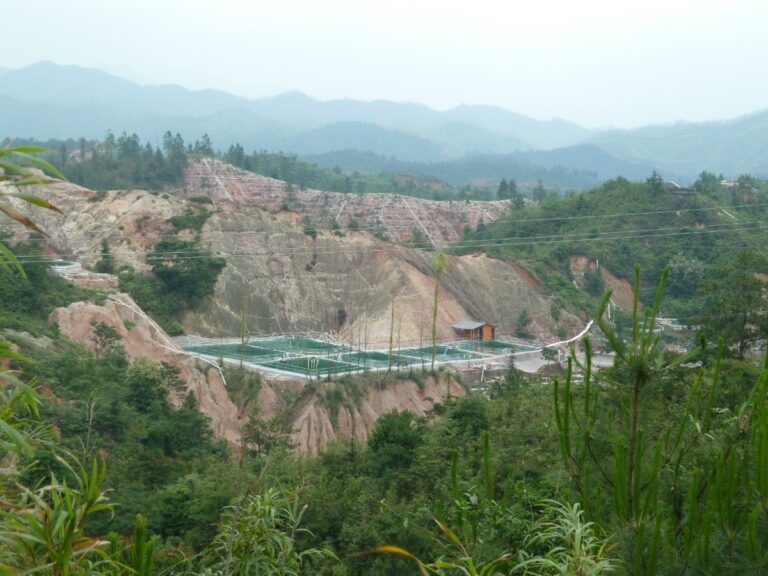Old Weapons, New Wars: India Is Turning Legacy Systems Into Battlefield Assets
There’s a quiet defence revolution afoot in India’s military as rotors, Rafales and repurposed missiles become a formidable force
As geopolitical tensions mount, ongoing conflicts globally have cradled battlefield innovation. Ananta’s Command Chain reviews the security and defence-centric developments that are shaping warfare’s evolution. In this edition we analyse how India is turning legacy systems into battlefield assets and how there’s a quiet defence revolution afoot in India’s military as several rotary platforms, Rafales and repurposed missiles become formidable force multipliers.
Indigenising The FamiliarFor decades India’s defence modernisation has been a toss up between high-profile foreign procurements and limited efforts towards indigenisation, albeit rising consistently. Focus is on major assets such as aircraft, submarines and warships. But behind the large platform deals such as Talwar class frigates from Russia, Rafale from France and Boeing and Sirkosky helicopters from the US, a quieter transformation is reshaping smaller but important areas, mainly in subsystems and armament areas.
Across the services, India is fielding indigenously developed subsystems and weapons that match or exceed performance benchmarks of long-standing imported counterparts.
One example is the Astra air-to-air missile, now in advanced stages of induction with IAF. The Astra Beyond Visual Range Air-to-Air Missile (BVRAAM), equipped with an indigenous Radio Frequency(RF) seeker, was successfully test-fired from an Indian Airforce Su-30MKI aircraft. The Su-30MKI, a fighter jet of Russian origin, has been manufactured in both licensed and knocked-down kit mode by HAL.

Astra can reportedly hit targets beyond 100km with guidance and navigation system on par, if not better than foreign-origin air-to-air missiles. Successfully tested on Su-30MKI platforms, it complements imported BVR missiles such as the Russian R-77 and French MICA across India’s fleet.
At sea, similar progress is seen with the Extended Range Anti-Submarine Rocket (ERASR), developed by DRDO’s Armament Research and Development Establishment in partnership with High Energy Materials Research Laboratory and Naval Science & Technological Laboratory. Trials aboard INS Kavaratti from June 23 and July 7, met all range accuracy, electronic time fuse performance and detonation parameters, validating it as a supplement or replacement for Russian origin RBU-6000 anti-submarine rocket launchers.
Indigenisation reflects the strategic doctrine of making backbone platforms more self-reliant by gradually replacing key subsystems with locally made ones. Adding homegrown capability, locally made parts, to existing structures operational continuity and minimises retraining. It also reduces the risks that come with integration and spreads industrial risk over a longer timeframe.
Rotors to the RescueIndia’s combat helicopter capabilities are entering a new phase, beyond utility and logistical support. The Army’s acquisition of six AH-64E Apache attack helicopters, three already received, reflects the reshaping of the tri-services rotorcraft ecosystem into a layered, networked, highly mobile force multiplier, beyond air support. These assets allow reconnaissance-strike integration, high-altitude manoeuvre and persistent firepower in border conflicts.
The IAF operates 22 AH-64Es inducted between 2019 and 2020. These are equipped with advanced sensors, Longbow radar, fire-and-forget Hellfire missiles and standoff rocket systems. The Army’s six AH-64Es aligns rotary firepower more closely with ground force command and tactical planning. The Apaches will be based in Rajasthan’s Jodhpur and deployed in western and northern theatres.
India’s rotary aviation rests on Russian-origin helicopters — the numerical and operational backbone. The Mi-17 V5 is the workhorse IAF’s medium-lift and air assault missions; older Mi-8 and Mi-17 variants remain active in disaster relief, casualty evacuation and troop transport. Mi-17s equipped with rockets and gun pods have been deployed in counter-insurgency operations and during standoffs along the Line of Actual Control.
The Navy’s Kamov helicopters, Ka-28 and Ka-31, procured from Russia, engage in anti-submarine and airborne early warning roles respectively. Though ageing, these remain critical to Navy’s surveillance and fleet support tasks. Similarly, the iconic Sea King helicopters — procured from UK and later upgraded – are naval rotary aviation’s backbone engaged in anti-submarine warfare, search and rescue, and over-the-horizon targeting. Some are being phased out, but Sea Kings still operate from frontline warships — the moniker “flying frigates” an ode to both their versatility and longevity.
IAF and the Army also use indigenous systems like the Light Combat Helicopter (LCH) ‘Prachand’, developed by Hindustan Aeronautics Limited (HAL) optimised for high-altitude operations — it can operate at altitudes exceeding 16,000 feet — and tested in the Leh-Ladakh region. The LCH features a glass cockpit, stealth-optimised fuselage and integrated weapons suite including air-to-air missiles, a 20mm chin-mounted gun and guided rockets. Its projected requirement exceeds 160 units, as LCH is expected to complement heavier attack helicopters and offer indigenous, high-altitude strike capability.
Navy’s Sea Kings will likely be replaced by the Sirkosky MH-60R Seahawks from US. These multi-role helicopters bring enhanced anti-submarine warfare capability with dipping sonars, sonobuoys and lightweight torpedoes, alongside surface strike and surveillance roles. The ALH Dhruv’s naval variant continues its shipborne logistics, SAR and utility roles, with further maritime-specific variants under development.
India’s tri-service helicopter fleet is layered by role, capability and altitude. At the top, Apaches provide heavy strike and battlefield suppression. The mid-weight LCH provide agile high-altitude firepower, while ALH Rudra — a weaponised Dhruv – covers multi-role utility and fire support in both Army and Air Force. At sea, the Ka-series helicopters, Seahawks, Sea Kings and ALH variants enable anti-submarine warfare, airborne early warning and logistics across blue water and littoral environments.
This distributed architecture enables mission-specific optimisation: Apaches for armoured pushback, LCHs for troop support in difficult terrain, and Russian legacy platforms for deep logistics and sustainment. Sea Kings and Ka-series helicopters remain vital in layered maritime operations until fully replaced.
India’s rotary future is likely to involve greater convergence of manned and unmanned assets. Projects for rotary UAVs, optionally piloted helicopters and manned-unmanned teaming (MUM-T) are under study, especially for high-threat or surveillance-heavy environments. Platform modernisation, better integration of indigenous sensors and precision munitions and deeper tri-service interoperability are expected to define the next decade of combat helicopter evolution
Rotorcraft (helicopters) – through a layered platform architecture, operational redistribution across services and strategic indigenisation — is expanding its role, earlier led mostly by fixed-wing combat capabilities (fighter craft). The Army’s use of Apaches signals bigger changes are on the way.
Ride into the Danger ZoneThe Navy’s acquisition of the Rafale-Marine fighter marks a new chapter in its carrier-borne aviation journey. The first batch expected soon, Navy is preparing to field the combat-proven carrier fighters aboard INS Vikrant, India’s first indigenously built aircraft carrier. As attention shifts to its high-performance capabilities, here’s a look a that have led India’s seaborne air power for over six decades—INAS 300 and INAS 303.
Commissioned in 1959 at the UK’s RNAS Brawdy with Sea Hawks, INAS 300, known as The White Tigers, Indian Navy’s first fighter squadron, pioneered carrier-borne fighter operations and saw combat in 1971, where they played a crucial role in the naval blockade and bombardment of East Pakistani ports. In the 1980s, the Navy transitioned to Sea Harriers, maintaining air defence from INS Vikrant (R11), the second aircraft carrier acquired from the UK.
This leap in capability allowed Indian Navy to maintain fixed-wing air power even on smaller carriers with ski-jumps and limited deck space. INAS 300 retained its lead role as the operational core of carrier air defence well into the 2000s.
In 2013, with the induction of the Russian origin MiG-29K carrier-capable multirole fighter, INAS 300 passed the baton to a newly raised squadron, INAS 303 — The Black Panthers. The Black Panthers delivered supersonic, high-agility naval air combat operating from INS Vikramaditya. The MiG-29K introduced fly-by-wire controls, multimode radar and precision-guided munitions to the naval aviation mix. The MiG-29K initially struggled with maintenance and performance issues, but upgrades have since stabilised the platform as the Navy’s frontline fighter, until the Rafale-M arrives.

Rafale-M, selected over the US-origin F/A-18 Super Hornet after competitive trials, brings substantial capability gains. It supports both CATOBAR (catapult-assisted take off but arrested recovery) and STOBAR (short take off but arrested recovery) operations, ensuring compatibility with India’s current carriers while leaving open future flat-deck options. Equipped with an integrated sensor suite – featuring RBE2 AESA radar, Spectra electronic warfare system and advanced infrared search and track (IRST) — Rafale-M offers superior air dominance, strike flexibility and survivability in maritime contested environments.
The White Tigers and Black Panthers remain pivotal to this transition. From mastering tail-hook landings on short runways to integrating aerial refuelling and maritime strike packages will be critical to onboarding the Rafale-M quickly and effectively. INAS 300, now in a training and transition role, is expected to support this phase, while INAS 303 is expected to lead frontline operations from INS Vikrant.
These squadrons have sustained India’s carrier aviation across multiple technological eras without break in capability – a rarity among global naval forces. From subsonic Sea Hawks and Harriers to supersonic MiG-29Ks and now fourth-plus generation Rafales, the Indian Navy has maintained institutional continuity in carrier-borne fighter operations across platforms, doctrines and generations.
The Indian Navy’s fighter roadmap goes beyond Rafale-M. With HAL and DRDO developing theTwin Engine Deck Based Fighter (TEDBF), India is working toward an indigenous naval combat aircraft designed for future flat-deck carriers. Until then, the Rafale-M will serve as vital bridge, keeping maritime air power at cutting-edge during the transition to homegrown designs.
Among the most demanding of air power domains, carrier-borne aviation requires not only advanced aircraft, but aircrew trained for high-G manoeuvres, night landings on moving decks and complex multi-role missions in a maritime environment. For over six decades, INAS 300 and 303 have upheld this standard – building a legacy of combat readiness, tactical adaptation, technological absorption and operational continuity.
With Rafale-M on the horizon, the White Tigers and Black Panthers are preparing once again to enter the danger zone — carrying forward a lineage that has made Indian naval aviation a formidable force.
A SAMAR to rememberInnovation in modern warfare isn’t only about what’s new, but what is repurposed. India’s Surface to Air Missile for Assured Retaliation (SAMAR) system is a case in point. DRDO-developed SAMAR transforms retired air-to-air missiles into agile, low-cost, short-range air defence assets. Once deemed past their service life for fighter operations, these missiles have now been returned to the frontlines. Their utility was proven in Operation Sindoor, where SAMAR systems were deployed in active combat conditions to provide mobile, point-defence capability against low-altitude threats.
SAMAR repurposes infrared-guided air-to-air missiles, such as the R-73, by adapting their fire-control logic and propulsion dynamics for ground-based launches. The system integrates these missiles with a lightweight launcher, electro-optical target acquisition and a tactical command and control interface. Designed for mobility and rapid response, it protects forward bases, radar sites and logistics convoys. By converting ageing missile stocks into short-range air defence (SHORAD) assets, SAMAR serves as a cost-effective force multiplier.
Unlike conventional air defence assets that rely heavily on radar-based early warning and longer engagement cycles, SAMAR is optimised for quick reaction against low-flying targets such as UAVs, helicopters and slow-moving fixed-wing aircraft. This makes it relevant in theatres of conflict where saturation drone attacks, loitering munitions or surprise close-air intrusions are increasingly common.
In the first phase of Operation Sindoor between May 7-11, SAMAR added to the layered air defence around strategic targets. SAMAR batteries neutralised aerial threats at altitudes and ranges once vulnerable to gap exploitation. The system’s infrared guidance allows reliable performance even in electronically contested environments with radar jamming and spoofing. A short launch-to-hit cycle and low thermal signature enhance its survivability and effectiveness.
SAMAR’s value goes beyond its battlefield kill record. It exemplifies a doctrine of circular defence economy — extending the utility of legacy systems through modular re-engineering and mission repurposing. By leveraging the residual kinetic energy and seeker fidelity of post-life air-to-air missiles, DRDO has provided the Indian armed forces with a scalable, cost-efficient tool for airspace denial suitable for deployment in forward or mountainous sectors are a constraint for large-scale radar-based air defence.
SAMAR reflects a trend in Indian defence R&D where legacy stockpiles are not seen as liabilities but as latent assets. IAF and DRDO identified suitable missile bodies, retrofitted them with updated software logic and validated the concept through extensive ground-based trials. Synergy between scientists, engineers, and combat operators has been central to SAMAR’s success.
Operation Sindoor marked its first major combat validation, but SAMAR’s relevance extends further. As India strengthens its layered air defence grid — Akash, QRSAM, MR-SAM, and the forthcoming XR-SAM — SAMAR adds a flexible, fast-deployable layer near high-value targets with minimal logistical burden. Its lower cost and ease of deployment make it effective against swarm threats, asymmetric air incursions and dynamic tactical situations.
Modern airspace is contested not just by manned aircraft but by drones, precision guided and munitions, and stealthy reconnaissance platforms, making low-level quick reaction systems essential. SAMAR meets that gap with indigenous ingenuity and operational pragmatism. It complements high-end systems to ensure no altitude band is left unguarded.
Check these out:- India’s official joint operations amphibious doctrine – HQ Integrated Defence Staff
- India’s official doctrine for joint cyberspace operations – HQ Integrated Defence Staff
- Inside Ukraine’s Fiber-Optic Drone War – The War Zone
- Alaskan Air Defense and Early Warning Systems – Library of Congress
- Interactive map of Russian military forces in the former soviet space – Rondeli Foundation
- Ukraine in maps: Tracking the war with Russia – BBC
- U.S. lifts ban on providing weapons and training for Ukraine’s controversial Azov Brigade – PBS























